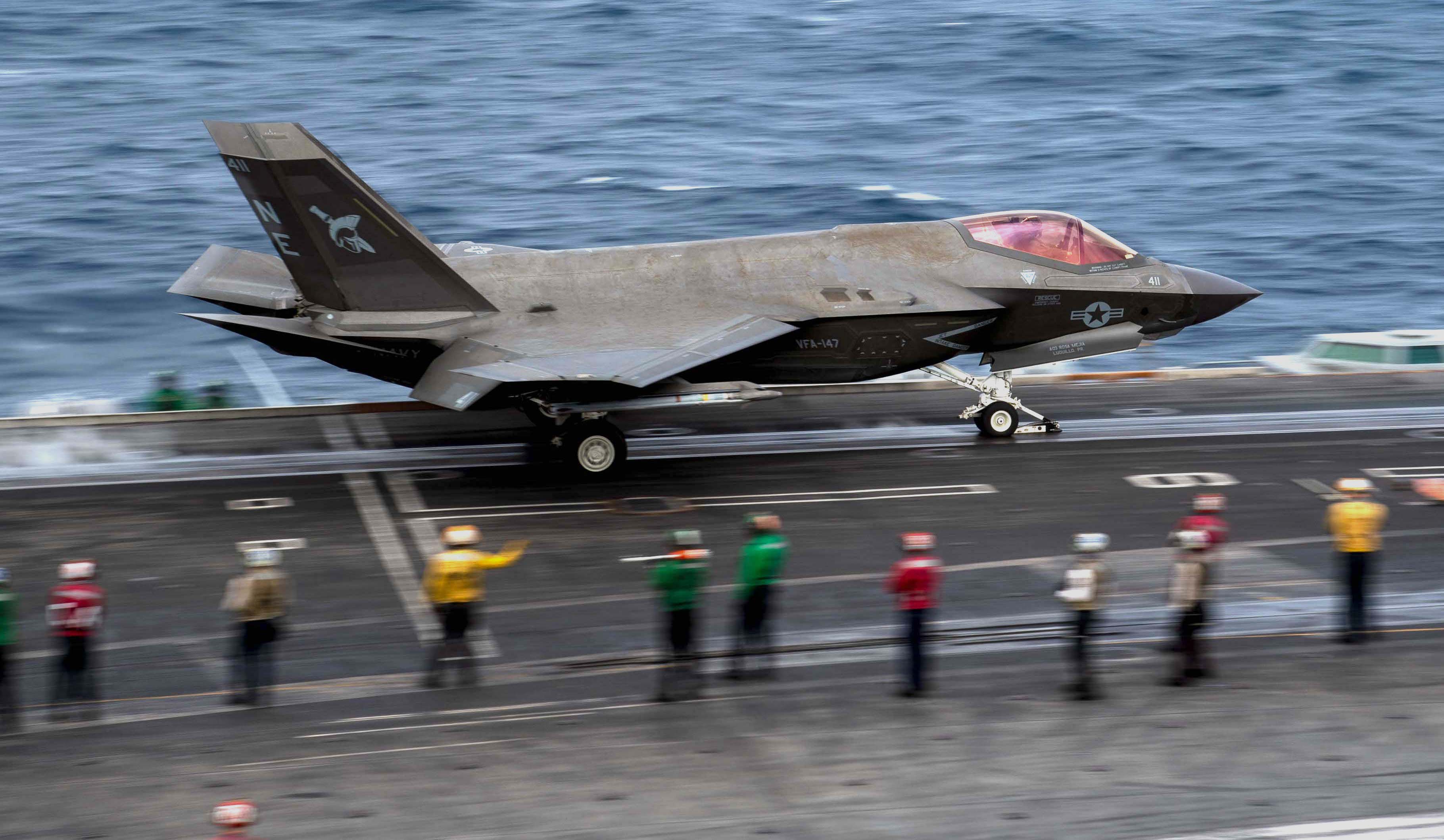
ABOARD AIRCRAFT CARRIER USS CARL VINSON, OFF THE COAST OF CALIFORNIA – USS Carl Vinson (CVN-70) pulled into its homeport of San Diego, Calif., on Monday after a six-and-a-half month deployment that saw the carrier operating exclusively in the Indo-Pacific region.
With the first deployment of the F-35C Lightning II Joint Strike Fighters and the Navy’s new CMV-22B carrier onboard delivery platform, the service had the chance to see how its new platforms would integrate into the air wing for consistent operations in waters like the South China Sea.
“It’s indicative of the competition amongst great powers … and in the end to compete, you got to be on the court to win. And you all spending all that time in the [U.S.] 7th Fleet [area of responsibility] is indicative of that,” U.S. 3rd Fleet commander Vice Adm. Steve Koehler told sailors over the 1MC Monday morning, as the carrier made its way to the pier at Naval Air Station North Island.
While the deployment allowed the crew to operate new aircraft aboard the carrier, it also included a high operational tempo of exercises with both regional and global allies and partners ranging from the United Kingdom to Japan to India.
“One of our major missions is to maintain the free and open Indo-Pacific as a West Coast carrier. And so I think that’s probably what we’re doing. It’s just ensuring that if we can steam through the waters, then other people can as well,” Capt. P. Scott Miller, the commanding officer of Vinson, told reporters on Sunday.
The Fight to Hawaii
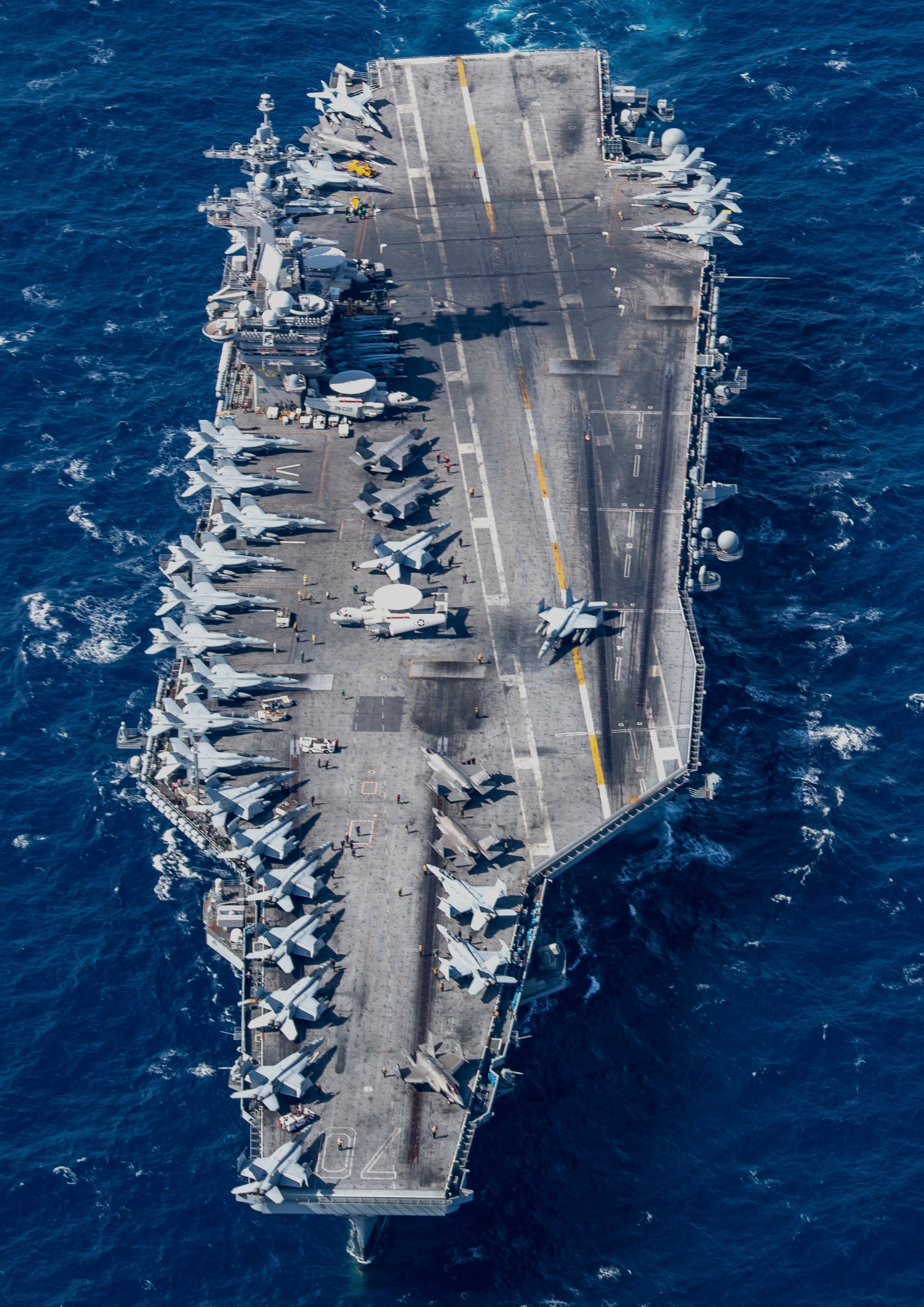
Following a composite unit training exercise (COMPTUEX) off the coast of Hawaii in June and July, Vinson briefly returned to San Diego before officially deploying on Aug. 2.
During its time sailing throughout U.S. Indo-Pacific Command, the carrier drilled multiple times with the Japan Maritime Self-Defense Force, exercised with the U.K.-led multi-national Queen Elizabeth (R08) carrier strike group and last month operated with two U.S. Navy big-deck amphibious warships.
The high volume of operations with Japan, in particular, helped Vinson when its escort ships peeled off for other tasking, according to Rear Adm. Dan Martin, the commander of Carrier Strike Group 1.
“They’re a great ally and very capable with their surface fleet as far as helping us out. They’re very good at the sub-surface search, you know, and grateful to have them join the strike group and steam with us because we train as an aggregate force, but then sometimes when you get to theater, we disaggregate,” Martin told reporters on Sunday aboard the carrier.
“It was helpful to have the Japanese jump in and plus up our numbers.”
‘A Paradigm Shift’
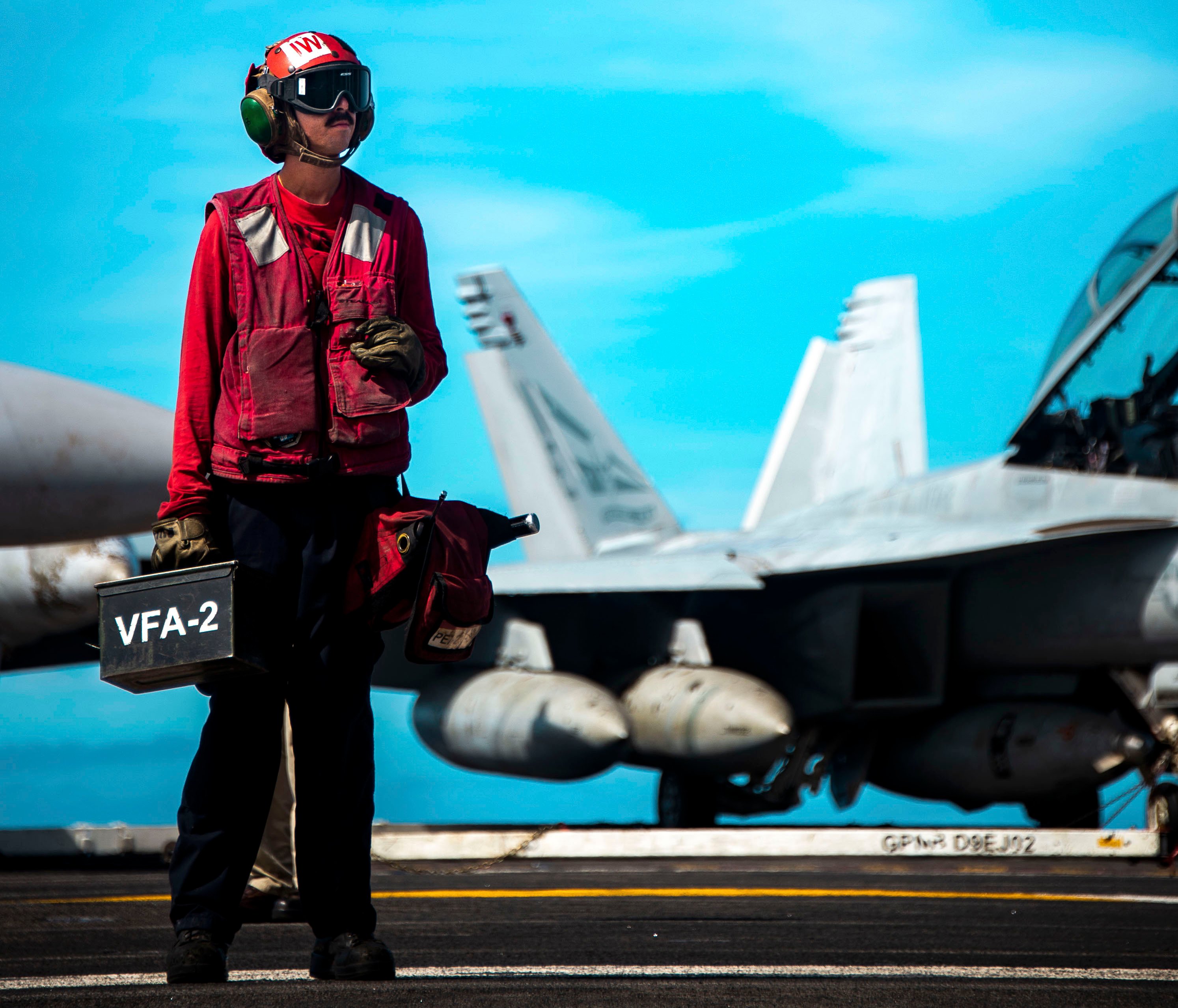
After two decades of carrier operations largely focused on U.S. 5th Fleet, officials said Vinson’s deployment to U.S. 7th Fleet represented a pivotal change in how and where carriers operate.
“I will admit, or agree, I think that there’s a different shift in mindset, for sure, when you know you’re going to drop bombs or you think that there’s a large potential you’re going to drop bombs in a long-running conflict to being operating in or near – specifically the [People’s Republic of China] – and not wanting to do that, but needing to be prepared to respond in an appropriate manner at any moment,” Miller said.
Crew members described the more congested and unpredictable waters of the Indo-Pacific as a more dynamic environment for operations and a more complicated one for communications and logistics.
Vinson performed two transits through the Strait of Malacca and operated extensively in the South China Sea during its time at sea.
“The deployment I think showcased what would be a paradigm shift in the way that the aircraft carrier and the strike group deploy. You know, since I was a young lieutenant, we’ve been going to 5th Fleet and flying close-air support missions for the Marines and the SEALs and the Army on the ground, right, with air supremacy,” Martin said. “And now this is just a complete change – the near pear competitor with activity that is in the air, on the surface and the sea and below the surface and the sea. And it’s a constant all the time. So you have to shape the air wing … to best handle that activity. And we’ve made some recommendations to what we can do better in that regard.”
Vinson‘s deployment also came as tensions between the U.S. and China increased – particularly as China flew aircraft into international airspace near Taiwan – and amid the ongoing Pentagon shift to a strategy that focuses on China, Russia and the Indo-Pacific.
Comparing Vinson‘s deployment to prior carrier deployments to 5th Fleet, crew members described a faster pace of operations in which the ship is moving around, as opposed to more stationary support when operating in U.S. Central Command. While operations in 5th Fleet were more predictable, with an aircraft carrier remaining on station to support airstrikes, Martin said unpredictability was an asset on this deployment.
“I didn’t like to be below 25 knots going through the South China Sea. I want to stay unpredictable. Once you’re even getting close to the South China Sea, you can bank on Chinese ships coming out to meet you, escort you,” Martin said. “You never make a move without an escort, which is why we try to make some moves that are unpredictable to try to scrape off some escorts.”
‘A Significant Milestone’
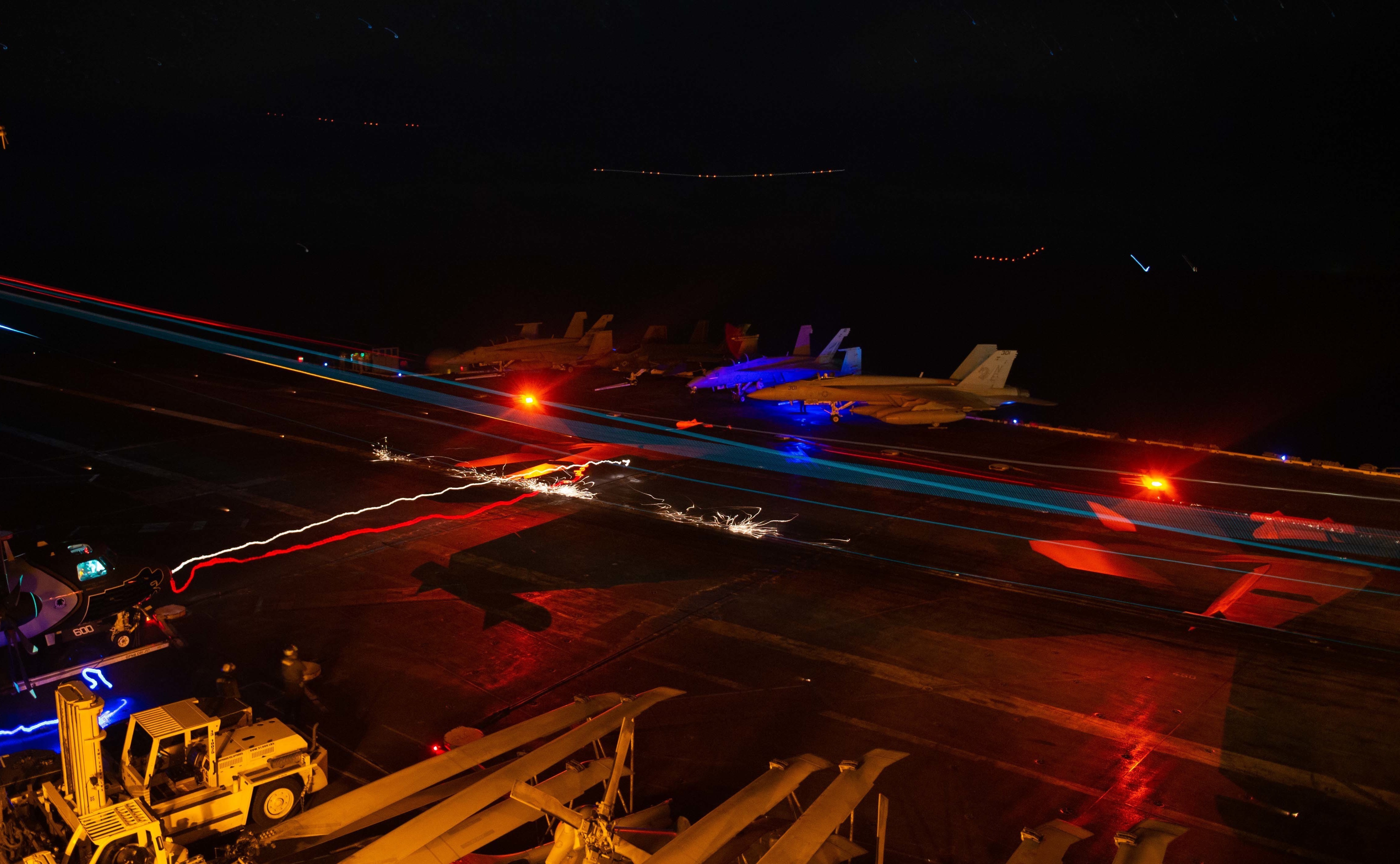
Largely operating in U.S. 7th Fleet, the carrier’s 70 aircraft hit a total of 15,000 flight hours and approximately 7,700 arrest landing and catapult shots.
Vinson deployed with two additional EA-18G Growlers electronic attack aircraft for a total of seven – the carrier typically deploys with five – and the crew wants more after seeing how the aircraft operated in the region, Martin said.
The Growlers proved particularly useful when operating with the F-35C.
“It’s a brand new aircraft with advanced sensors. So we like to pair them with the Growler to complement each other and when you fly around that theater, collection operations become a big deal,” Martin said of the F-35C.
The carrier also deployed with one additional E-2D Advanced Hawkeye on top of the usual four in the air wing.
Miller described the first F-35C deployment as “a significant milestone,” noting the deployment on the carrier marks the first time the aircraft have spent an extended period of time at sea, which is a difficult environment.
“As far as how it operated on the carrier, we did a lot of time and effort put in to making sure that it could operate, and that it could be sustained and maintained,” Miller said of the F-35C. “And I’ll tell you it hit all the marks that it sought to achieve. It was seamless from an aircraft carriers perspective, as far as how it integrated into the traditional air wing. And so we had no issues with it.”
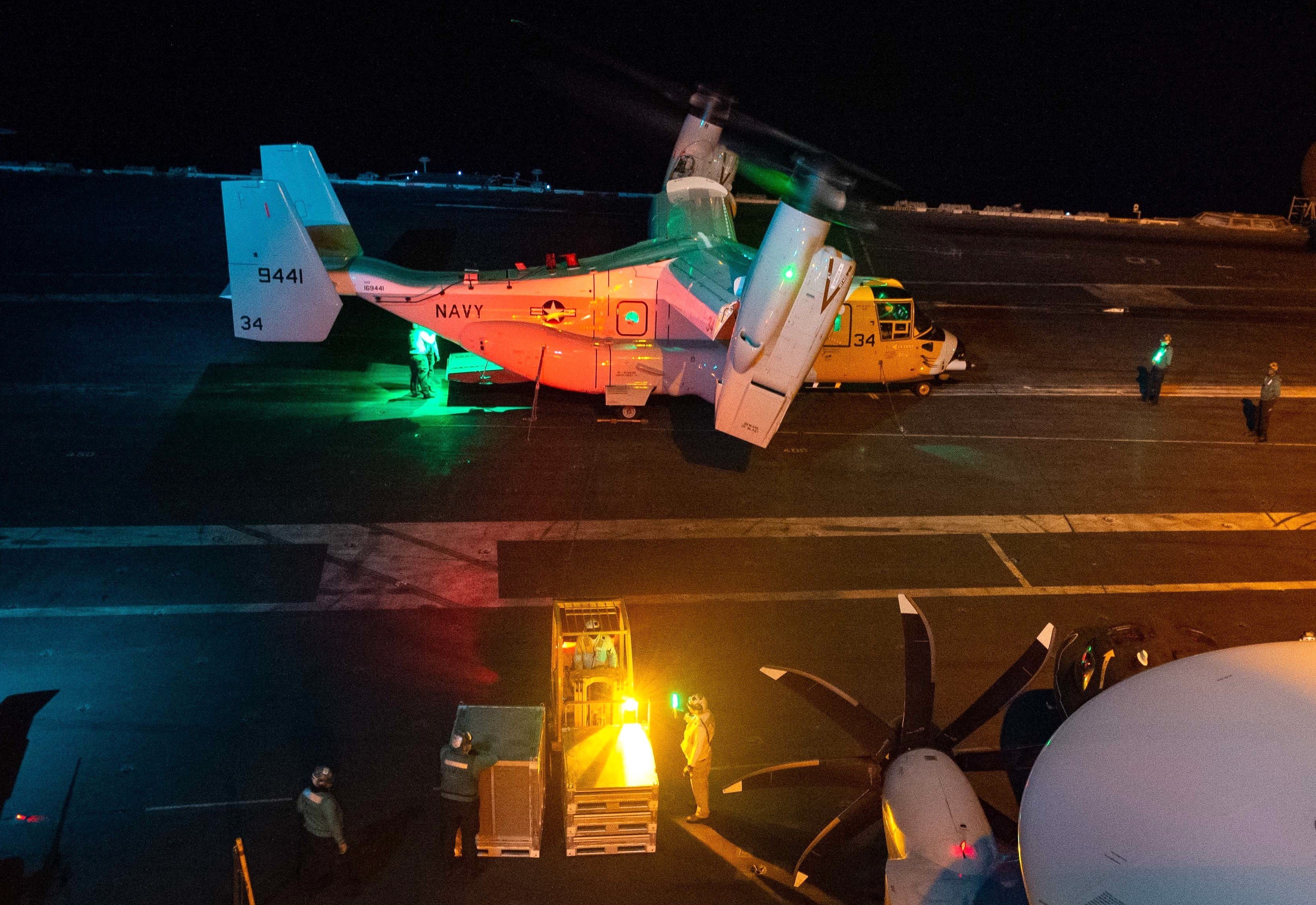
Miller said the Navy is still learning what type of environment are best for an aircraft carrier to recover the CMV-22Bs, which can take off and land vertically, while the previous C-2A Greyhound CODs came aboard with an arrested landing.
“Unlike a C2, where we would need to make sure that the ship’s equipment was working at all times to recover that, but the CMV-22, you know those things can land on LPDs, LSDs, LHAs, the CVNs. So it gives us a ton more flexibility for getting stuff up and around the theater,” Miller said.
Since the CMV-22Bs can land on the flight deck at night, Miller said the carrier had more opportunities to receive deliveries.
“So, the C2 – it used to have that capability. The Navy abandoned that some time ago. But now that with the CMV-22 COD, we have brought that back,” he said. “And that did prove very useful for us just because we’d get a day log hit and then a night log hit, so we were getting more stuff faster.”





